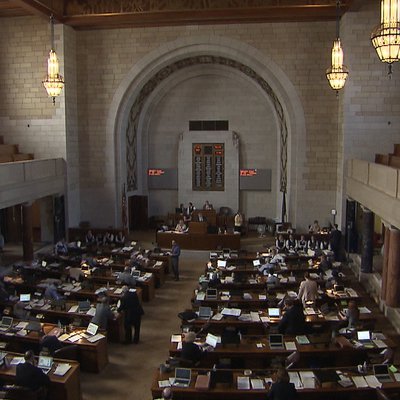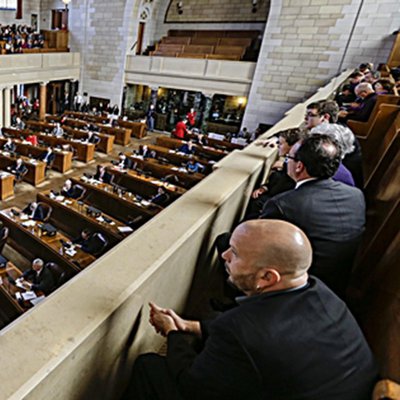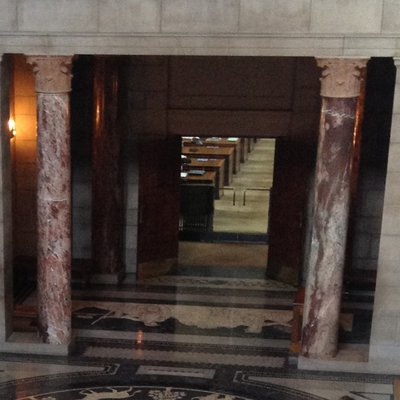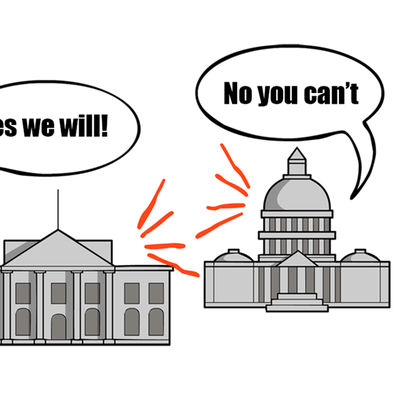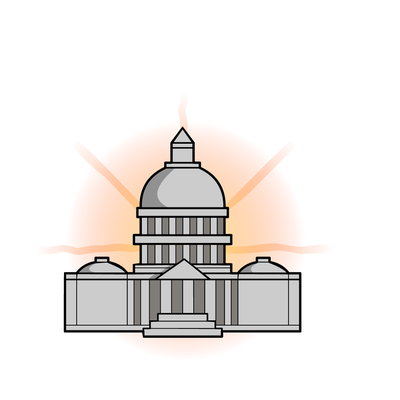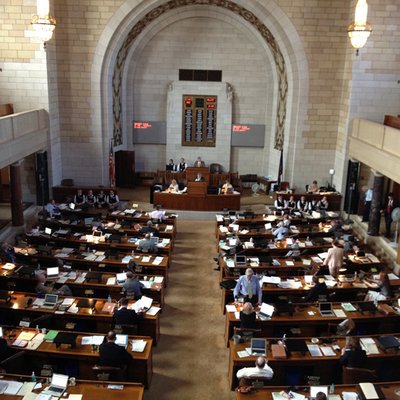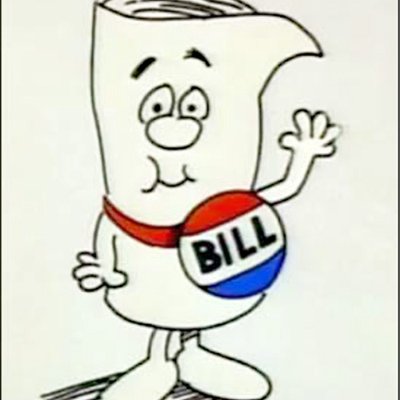CH 11
Unicameral
The Role of the Legislature
Lesson 1 - What's in a Unicameral?
This chamber has galleriesIn this case, a gallery is a balcony area where members of the public can watch sessions. on three sides for the public to come in and watch the Legislature in session.
Glass doors have been added to the entryway so observers can look in without disturbing the proceedings. These are some of the ways senators make sure the public can see what they’re doing.

There isn't as much artwork in this chamber as in some other parts of the Capitol. The scenes that are here show the explorers and traders and settlers who came to this land and encountered native cultures--points of meeting for the people who built Nebraska.
Go to the North Façade to find out more about how people got here. [Provide link?] Today, representativesPeople elected to the legislature to present the ideas and carry out the will of the people in their assigned area. from all parts of Nebraska meet here in one room, in one house.
In a two-house legislature, each house passes its own version of a bill, and then the differences are worked out in a conference committeeThis is a group of representatives from both houses of a legislature who make compromises and changes to come up with a bill both houses will support..
The Nebraska Legislature has only one house, so there's no need for a conference committee to meet. It's not only more open, it's more efficient. And it can cost less to run than a two-house legislature.
Sometimes the senators disagree. But here their job is to work together to resolveTo come up with a solution for a problem or come to agreement. their differences and make life better for all Nebraskans.
The Legislature starts the session on the first Wednesday after the first Monday in January. Sometimes important issues come up after the session is over for the year. Then the governor can call a special session, or two-thirds of the Legislature can require the governor to call the special session.
During regular sessions, the Legislature can consider any issues relating to state government functions. But in a special session, they can consider only one special issue. Either way, the bill first has to be introduced and assigned a number.
The committee has three choices:
- take no action (hold)
- kill the bill (fail)
- send the bill to General FileFirst-round debate. in the full Legislature (advance)
See what types of Legislative Committees are in the Nebraska Legislature.
Steps of a Bill
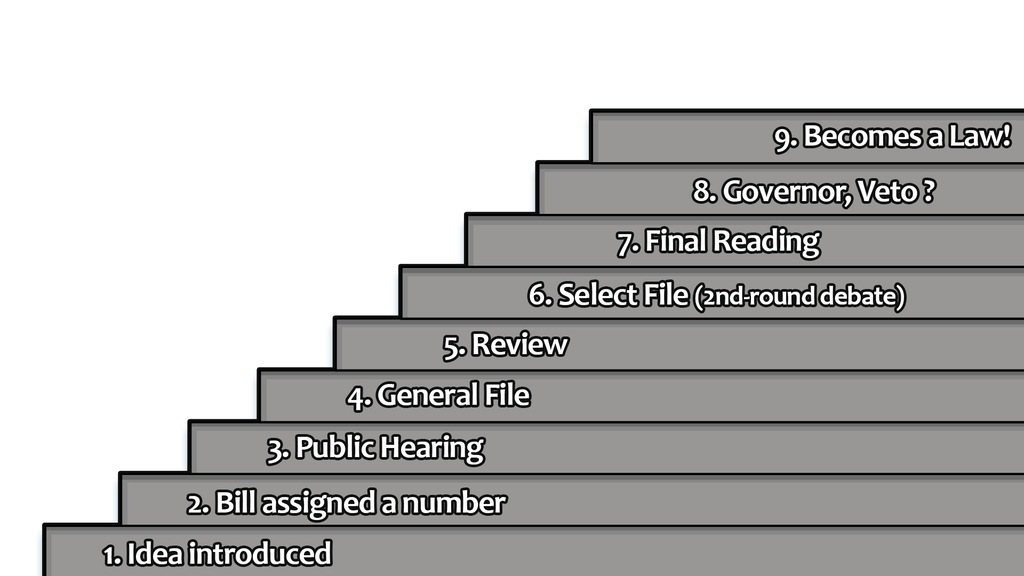
If the bill passes on final reading, the bill then goes on to the governor. If the governor signs or if the governor takes no action for five days, the bill becomes a law. If the governor vetoesWhen an executive opposes a bill passed by the legislature, the executive rejects it with a veto and the bill does not become law. the bill, the Legislature gets it back with a list of the governor's objections. The governor can take out specific budget items. This is called a line-item veto. The Legislature can overrideWhen a bill is vetoed, the legislature can vote on it again and if the majority is big enough, the bill becomes law in spite of the executive’s veto. a governor's veto if three-fifths (30 senators) vote to do so.

Unicameral organization
- 49 members called senators
- each senator represents one district
- the borders of the districts are reconsidered every 10 years
SOMETHING TO THINK ABOUT . . .
What do you think it would be like to be a senator in the Nebraska Unicameral?
